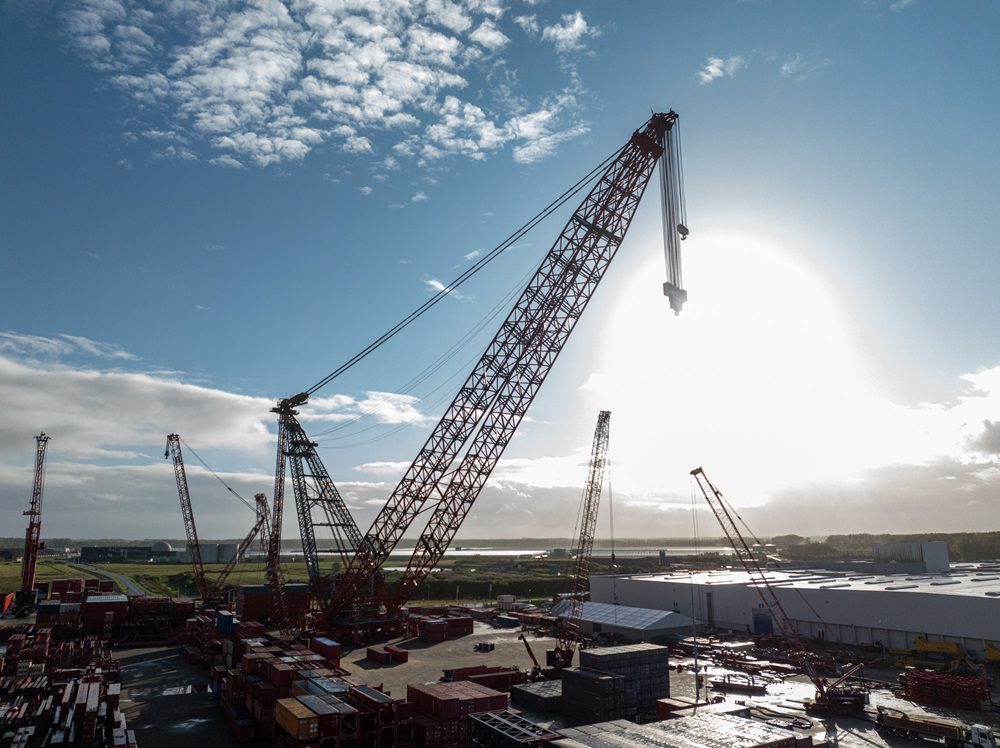World’s largest land-based crane completes electric testing

This post was originally published on this site

Mammoet’s SK6000 – said to be the world’s strongest land-based crane – has been tested for fully electric operation.
According to the company, the test shows that the crane is able to offer zero-emission capability to projects taking place anywhere in the world.
The technology also reduces the noise generated by crane operations, Mammoet says, resulting in a better work environment where communication is easier. In turn, large projects are made safer, cleaner and easier to finance.
The SK6000 can now operate directly from grid power – or, at sites without power network access or with supply stability issues – via batteries or hydrogen generators.
Niek Bezuijen, global sustainability advisor at Mammoet, said: “Thanks to this test we can now say that the SK6000 operates fully zero-emissions on-site. Electrification isn’t a matter for the future of heavy lifting – it is needed now, and through innovations like this Mammoet can help its customers lead on safety, efficiency, sustainability and cost.”
Testing was carried out using two 600kWh Battery Boxes from power supply specialist Bredenoord, connected in series to deliver 1,200kWh; around the same output as 20 electric cars.
Connection took a day shift, in parallel with test weight reconfiguration activity. According to Mammoet, this proves that the use of batteries has minimal impact on site operations. Furthermore, battery packs capable of operating the SK6000 are becoming “widely available”, in standard 20ft shipping container form factors, which can easily be mobilised to and from site.
By plugging into a medium voltage network – commonly available in heavy industry – the SK operates directly from the grid. At port facilities, so-called ‘shore power’ connections, typically used to prevent cargo vessels idling at port, are capable of powering the crane.
Battery functionality offers a further option, with the additional benefit of being chargeable from lower power networks. The significant periods of time between individual ring crane lifts allow the chance for battery packs to recharge.
Hydrogen generators can also be used where neither grid power nor battery power is an option, for example at remote sites without significant infrastructure.
This project was part-funded by the Subsidieregeling Schoon en Emissieloos Bouwmaterieel in the Netherlands; a research and demonstration fund to develop zero-emission initiatives at construction sites.
Read next: World class centre for eye health reaches topping out milestone
Are you a building professional? Sign up for a FREE MEMBERSHIP to upload news stories, post job vacancies, and connect with colleagues on our secure social feed.





Responses